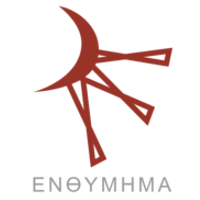Narrative Time and the Thyroid: Hormone Secretions and Storytelling in Italo Svevo's "Doctor Menghi's Drug"
DOI:
https://doi.org/10.13130/2037-2426/7661Ключевые слова:
Medical humanities, narratology, posthumanities, narrative and medicine, Italo Svevo, ModernismАннотация
In the wake of fin-de-siècle discoveries in the field of endocrinology, bodily glands and the hormones they produced featured prominently in the literary works, visual arts, and popular culture of early twentieth-century Europe. Experimental surgery promised rejuvenation and intellectual vitality through gland transplantation and grafting, while phenomena of all sorts began to be associated to hormone production in causal links—from bodily rhythms to behavioral patterns, from the pace of history to the trajectory of nations. Italo Svevo was fascinated by Basedow and Graves’s discoveries on the thyroid, a gland that was supposed to determine the speed and promptness of one’s body according to the amount of hormones it produced—hypothyroidism, or scarcity of hormones, would entail lethargic behavior and slow movements, while hyperthyroidism, or the abundant production of hormones, would lead to excessive activity and consumption. Through the analysis of an early short story by Svevo, “Doctor Menghi’s Drug” (ca. 1904), this paper addresses how the activity of the thyroid affects not only bodily rhythms, but also narrative time—intended as both the time of the story (diegetic time) and the pace of storytelling—and it explores how metabolic processes act as constraints for literary creativity by complicating narrative time and raising questions of narrative agency.Библиографические ссылки
Cepach, Riccardo, ed. Guarire dalla cura: Italo Svevo e i medici. Trieste: Comune di Trieste, Museo Sveviano, 2008. Print.
Haraway, Donna. "A Cyborg Manifesto: Science, Technology, and Socialist-Feminism in the Late Twentieth Century," in Simians, Cyborgs and Women: The Reinvention of Nature. New York: Routledge, 1991. 149-181. Print.
Hyrtl, Joseph, ed. Onomatologia Anatomica. Geschichte und Kritik der anatomischen Sprache der Gegenwart. Vienna: Wilhelm Braumüller und Universitätsbuchhändler, 1880. Print.
Latour, Bruno. Reassembling the Social: An Introduction to Actor-Network Theory. Oxford: Oxford University Press, 2005. Print.
Livius. Ab Urbe Condita, 2.32. English edition and translation: B.O. Foster, Livy. History of Rome, Vol. 1, Books 1-2, Cambridge MA - London, 1919. Print.
Medvei, Victor Cornelius. A History of Endocrinology. Lancaster: MTP Press, 1982. Print.
Pollock, Anne. “The Internal Cardiac Defibrillator,” in The Inner History of Devices. Edited by Sherry Turkle. Cambridge, MA: MIT Press, 2008. 98-111. Print.
Prince, Gerald. “Notes toward a Characterization of Fictional Narratees.” Genre 4 (1971). 100–05. Print.
Schlich, Thomas. The Origins of Organ Transplantation: Surgery and Laboratory Science 1880-1930. Rochester, NY: The University of Rochester Press, 2010. Print.
Svevo, Italo. Zeno’s Conscience. Translated by W. Weaver. New York: Vintage Books, 2003. Print.
---. Due racconti. Milano: Mondadori, 1967. Print.
---. La coscienza di Zeno. Milano: Dall’Oglio, 1966. Print.
---. Carteggio con James Joyce, Eugenio Montale, Valery Larbaud, Benjamin Crémieux, Marie Anne Comnène, Valerio Jahier. Edited by B. Maier. Milano: Dall’Oglio, 1965. Print.
---. Saggi e pagine sparse. Edited by Umbro Apollonio. Milano: Mondadori, 1954. Print.
Загрузки
Опубликован
Как цитировать
Выпуск
Раздел
Лицензия

Except where otherwise noted, the content of this site is licensed under a Creative Commons Attribution 4.0 Unported License.
##plugins.generic.dates.accepted## 2016-12-22
##plugins.generic.dates.published## 2016-12-29


